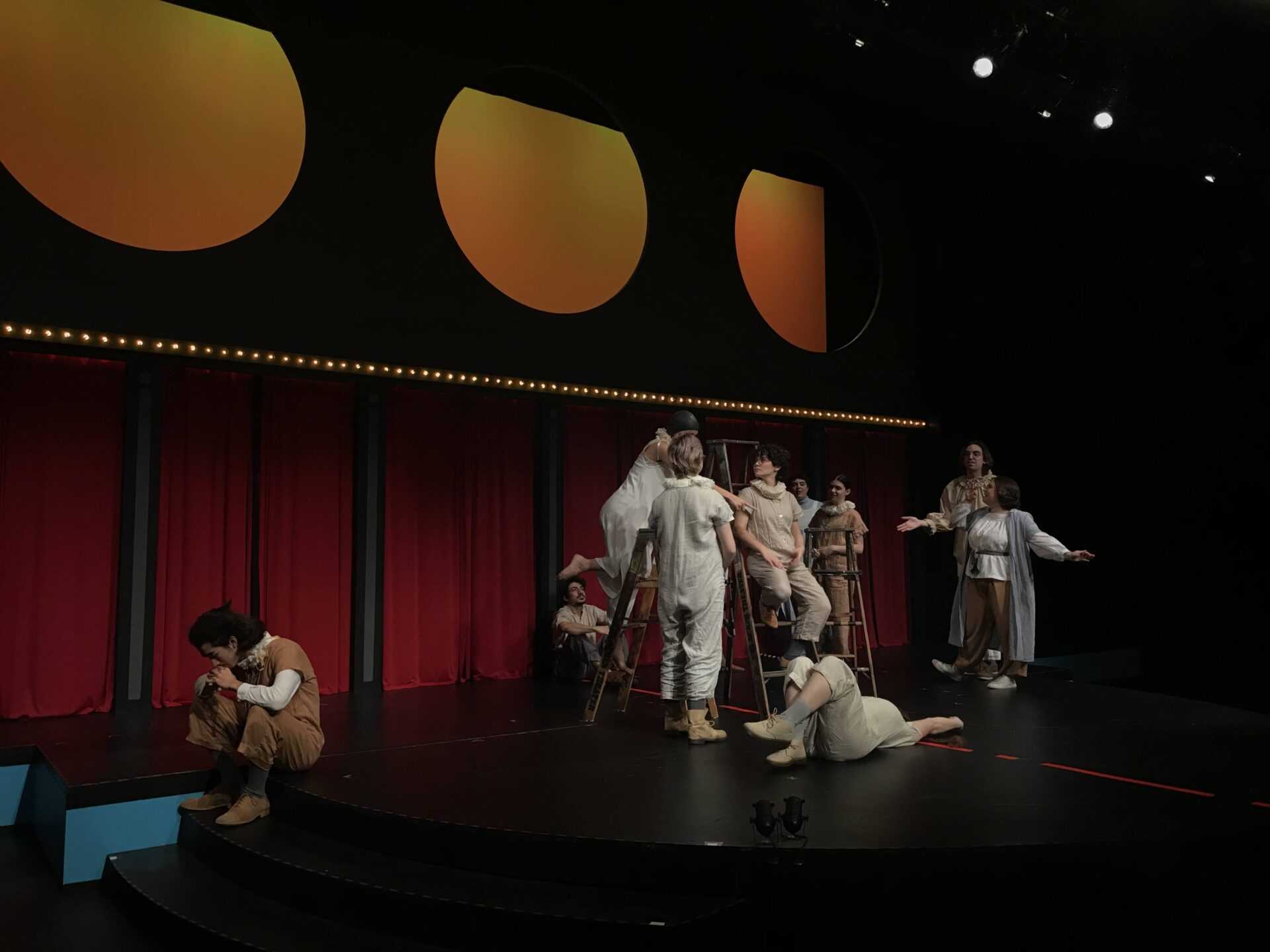
The Lewis & Clark Theatre department put on a vivid display of the unity and disconnect of art, politics and religion Oct. 27-30 and Nov. 3-6 with their rendition of “Passion Play” directed by Associate Professor of Theatre Rebecca Lingafelter.
“Passion Play,” written by the award-winning playwright Sara Ruhl, is a play in three acts that portrays a distinct and poignant recreation of the Passion of Christ in three different historical contexts.
In the Christian tradition, “The Passion” is a recreation of Jesus’ last days on Earth before his crucifixion and rise from the dead. Each act unveils the unique ways 1575 England, 1934 Germany and 1950s-1980s South Dakota weave religion and politics together through a communal, “poor theatre” experience.
This project featured a cast of 14, with each member filling a distinct character for each of the three acts. Four of the cast members are senior theatre majors completing their capstone projects.
The planning, production, rehearsal and preparation for “Passion Play” took somewhere between 120 and 130 hours for the cast and crew, according to an estimate by Lingafelter. This is not even counting the hours of work the costume shop and workshop put in. A team of over 50 people, including guest artists, worked together on “Passion Play.”
Lingafelter noted that when looking for a mainstage production she chose options that had a certain focus on the historic perspective of community.
“Most of the plays I chose had some kind of medieval resonance,” Lingafelter said. “Not just in terms of plague years, though I think that’s present, but this sort of culture of medieval performance in Europe being around this sense of shared communal ritual.”
More than anything, “Passion Play” was about a celebration of theatre, something to remind the LC community of the space lost over the pandemic.
“We tried to stream and we tried to Zoom and we did our best to cobble together something, but that’s not what we do,” Lingafelter said. “What theatre does is not mediated performance. What theatre does well is this kind of phenomenological experience of bodies, sharing breaths and imagination and that space together.”
While our impulse may be to glorify the theatre through rose-colored glasses in our separation from it, “Passion Play” is here to remind us that nothing so profound is that one-dimensional.
“It doesn’t just romanticize what it means to be in community, but it also looks at the responsibilities of that and the different ways that that manifests over time.” Lingafelter said. “It’s about both the beautiful, positive aspects of that, and also, the violent, horrific aspects of when a community becomes defined by its oppression of the other.”
In her director’s note in the program, Lingafelter states that “Passion Play” demands people ask themselves what stories their own community is telling to itself, about itself. What is “Passion Play,” its production and its performance, saying to LC about LC? Lingafelter believes it questions the audience on the tension between community and individuality.
“How do we hold each other in community while still honoring individuality?” Lingafelter said. “How can you share collective vision while honoring individual perspective or purpose?”
The cast explores this tension in a technique brought in by Amber Whitehall, the movement director for “Passion Play,” called “flocking.” This brings in moments of abstract group movement to the performance.
“They switch leaders, which also starts to have some pretty profound implications.” Lingafelter said. “It’s really about stripping away all of the external stuff of the theatre to really come into the performer … the power of live performance is with the actor.”
With this focus on the power and energy of raw performance, combined with the aesthetic of “poor theatre” Ruhl demands with “Passion Play,” the elements of physicality were even more important and intentional. Significant, symbolic prop pieces such as the cross were represented by a ladder, and the water by a fish marionette. The fish marionette was also featured on Nov. 5 in a fish parade for Watzek’s “First Fridays” art series sponsored by Arts @ LC.
“Why this play feels so resonant to me is it is about a group of young people … living through cataclysmic times, and having an opportunity to sit with that and watch this group navigate that,” Lingafelter said.
Young people are living through too many historic events to count, and “Passion Play” is really a love letter to how theatre acts as a guiding light through that. The pandemic is isolating for so many, yet the community “Passion Play” presents to LC urges individuals to think beyond themselves as they live through such tragedies.
“Things like group laughter and silence help us not feel so inside of those experiences and realize that we are a part of a group of people who are all going through this really cataclysmic change together, you know?” Lingafelter said.
The LC mainstage will continue the trend of historical narrative with their performance of “Medea” in the spring. The production excitingly has an all-student design team with three student designers and one student technical director, the most they have ever had.
Subscribe to the Mossy Log Newsletter
Stay up to date with the goings-on at Lewis & Clark! Get the top stories or your favorite section delivered to your inbox whenever we release a new issue.

Leave a Reply